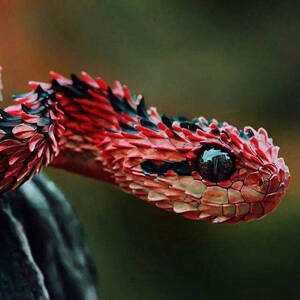Morelia bredli
IUCN
LCBasic Information
Scientific classification
- name:Morelia bredli
- Scientific Name:carpet python, felt python, central python
- Outline:Squamata
- Family:Squamata Serpentes Pythonidae Morelia
Vital signs
- length:2-4m
- Weight:15kg
- lifetime:15-20 year
Feature
The carpet python gets its name from its unique pattern that resembles a carpet.
Distribution and Habitat
Carpet pythons are found in Australia, New Guinea, and some islands in Indonesia. Carpet pythons live in a variety of environments, including forests and savannas. Those living in the forest are mainly arboreal and feed on a variety of vertebrates.
Appearance
The total length of the carpet python ranges from 120-250 cm, with the longest record of 4 meters. The body color varies depending on the geographical environment, but there are types with yellow or light brown base colors and dark brown large markings. The scales outside the snout are small, and the hot spots are located on the snout scales, in front of the upper lip scales, and behind the lower lip scales. The body length of the newly formed juvenile snakes ranges from 25.4cm to 35.5cm, and the body length of the adult is between 135cm and 165cm. Some individuals can grow to 180cm to 210cm. The young of the carpet python can grow to 120cm in a short period of time, and then the growth rate will slow down. Their head width is obviously wider than the neck. The carpet python is a semi-arboreal snake with a prehensile tail. The body color of the newborn carpet python is ochre red. As the snake grows, the red color will gradually fade, and it will return to the adult body color when it i
Details
All pythons are non-venomous, and carpet pythons are no exception.

Carpet pythons strangle their prey by constricting their bodies. The species is usually active during the day and at night, with some subspecies being primarily nocturnal. Carpet pythons like to live in trees, although they usually bask in the sun in open spaces.
The main threats are hunting by humans, habitat loss, etc.
Abroad, once humans keep carpet pythons, they need to go through relevant procedures and obtain a license to keep carpet pythons, otherwise it is illegal.
Protect wild animals and eliminate game.
Maintaining ecological balance is everyone's responsibility!








